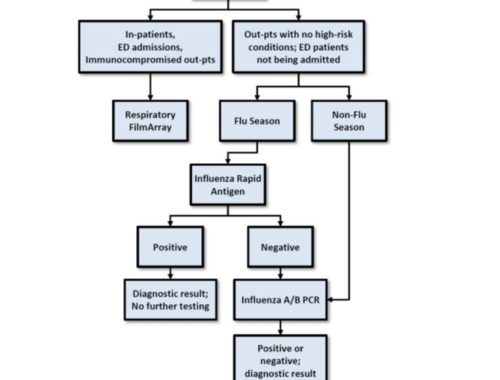The diagnostic evaluation of allergic disease occurs in the context of a patient’s complete clinical presentation. Important factors include, age, clinical signs and symptoms, relevant allergen exposures, and the performance characteristics (sensitivity, specificity, and predictive values) of the allergy tests themselves. Allergy tests yield information about sensitization to allergens, which is not always equivalent to allergic hypersensitivity (i.e., sensitivity); thus, interpretation in the context of clinical history is essential for accurate diagnosis.
The clinical history guides the allergens selected for testing. This is especially true for specific immunoglobulin E (sIgE) food allergen testing. Whenever possible, it is important to determine the specific food allergen(s) suspected of causing a clinical reaction prior to performing tests for sIgE antibodies to foods. The American Academy of Allergy, Asthma and Immunology cautions; “…Indiscriminate screening can result in irrelevant positive food allergy tests resulting in an inappropriate avoidance of foods that could actually result in a self-fulfilling prophecy i.e. trigger an allergy when there hadn’t been one initially…” In short, the optimal diagnostic utility of food allergen sIgE testing occurs when there is a history compatible with, or suggestive of allergy triggered by exposure to specific food allergen(s).
The use of a profile of sIgE tests to food allergens has a role, but should be reserved only for those situations in which there is a high probability of IgE mediated food allergy without an identifiable food allergy trigger. The use of sIgE testing to support the diagnosis of a suspected food allergy rests in their ability to give accurate and consistent results when used as a confirmatory tool and should not be used as a first line screening test.
To complement the use of whole allergen testing to assess food allergy, the Spectrum Health Regional Laboratory offers food allergen component testing. The allergen component test menu for egg, milk, and peanut, has recently expanded to offer component testing for tree nuts including Brazil Nut, Cashew, Hazelnut, and Walnut.
Testing for sIgE to component allergens is different from whole allergen testing. Allergen component testing measures sIgE antibodies to individual proteins unlike whole allergen testing which measures the presence of sIgE antibodies to the whole allergen which contains a combination of allergenic and non-allergenic proteins. This next generation testing identifies the source of sensitization and helps clinicians assess the risk of a systemic reaction.
Results of sIgE component testing can assist the practicing allergist with patient selection for oral food challenge as well as other possible management recommendations. Because of the diagnostic and management complexities associated with food allergy, referral to an allergy and immunology specialist should be considered when evaluating a patient with suspected food allergies. For questions related to sIgE testing, contact Dr. David Altervia the “Contact Us” link above or ImmunoChemistry at 616.267.2770.

